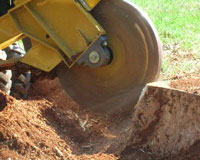As you may have heard, the Colorado Department of Agriculture announced Friday that emerald ash borer (EAB) has been confirmed to be present in Colorado. The specific detection was in Boulder.
If you are not aware of emerald ash borer, it is arguably the most devastating invasive insect to have breached the North American shores in many decades. Since its accidental introduction into Michigan and detection in 2002 it has spread across much of the eastern half of the US and Canada killing tens of millions of ash trees. There is every reason to believe that before this invasive has completed its effects it will likely eliminate essentially every ash tree where the insect is present, causing extraordinary ecological and economic damage. All species of ash trees native to North America are susceptible, including the very widely planted green and white ash used as street trees in Colorado.
At present the Colorado Department of Agriculture and federal agencies involved in tracking exotic insects are working to determine the extent of the present infestation. We can hope that it is limited to the single site, but expect a greatly intensified effort in the upcoming year to better delimit the current range of EAB in Colorado.
You will also hear more in the future on what plans there are to help slow the spread of this insect within Colorado. Although eradication is not possible, aggressive management can greatly slow the rate of tree loss and spread of the insect. This can be a tremendously helpful in slowing the rate of tree loss, with its associated costs, and in planning for replacements. (This insect will cost many municipalities millions of dollars over the next decade in expenses related to tree removal alone.)
You very likely will be asked questions about emerald ash borer in the upcoming weeks, months, years. Specific Colorado-based materials to help you will be developed before next year and after there is better assessment of the situation. However in the interim there are many materials already developed elsewhere that I would recommend you familiarize yourself with.
Regarding questions for control the North Central region has an excellent publication on control options:
http://extension.entm.purdue.edu/EAB/PDF/NC-IPM.pdf
Since many of these controls involve the use of systemic neonicotinoid insecticides, and these insecticides have generated controversy in some circles, this is addressed in the sheet at:
http://extension.entm.purdue.edu/eab/PDF/potentialSideEffectsofEABInsecticidesFAQ.pdf
Guidelines as to how to make economic decisions on EAB management are in the publication:
http://extension.entm.purdue.edu/EAB/PDF/NABB_DecisionGuide.pdf
Several Midwestern universities have excellent EAB resources, including publications (such as above) Q&A sheets, and other fact sheets. Among these I would recommend the one found at
• Ohio State: http://www.ashalert.osu.edu/Secondary/secondary.asp?id=46, at
• Purdue: http://extension.entm.purdue.edu/EAB/
• The national web site at: http://www.emeraldashborer.info/index.cfm#sthash.s0d4HUl9.dpbs
Diagnosis of emerald ash borer affected trees is also critical. There are some very useful diagnostic features associated with the insect (D-shaped exit holes, meandering tunnels under the bark). But there are some other wood boring insects associated with ash that are nowhere near as damaging as EAB and have long been present. Plus some beetles that sort of look like EAB. These are discussed in the sheet at: http://bspm.agsci.colostate.edu/files/2013/03/Emerald-Ash-Borer.pdf
By Whitney Cranshaw, Extension Entomologist, Colorado State University


